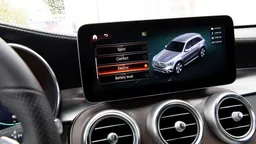Interested in this kind of news?
Receive them directly in your inbox. Delivered once a week.
Electric vehicles have been growing in popularity in recent years, but still make up only 1.2% of the EU fleet, according to 2017 figures, which include battery and plug-in hybrids. The obstacle to a more rapid take-up was at first the lack of charging points, but these are now growing – research by the Electromobility Platform shows there are sufficient public recharging points for the number of electric cars on the road today, and there will be in 2020 if governments meet their plans outlined to the European Commission.
The main hurdle for consumers to overcome now is the upfront price; big reductions in battery costs have not yet translated into cheaper cars to buy – though battery electric cars are already substantially cheaper to run than petrol or diesel-fuelled cars. A report for T&E published last September predicts that the total cost of ownership of an e-vehicle over six years will become cheaper than for petrol and diesel cars in the period 2022-25. But in some market niches parity has already been reached, aided by purchase incentives.
The Norwegian government has led the way in incentivising electric cars, with generous tax breaks for e-vehicles, increased road tolls for petrol and diesel cars, and in-use incentives for EV drivers such as access to bus lanes or reserved parking slots. More than half of new cars sold in Norway in 2017 were either battery electric vehicles or plug-in hybrids. But now demand is outstripping supply, even in Norway which only has a population of 5.3 million. As a result the waiting time for motorists wanting to go electric is between eight months and two years, while thousands have paid to be put on a waiting list for new models by Nissan, Tesla, Audi and Jaguar that have not yet been launched.
Steffen Kallbekken of the Cicero Centre for International Climate Research, which has analysed the costs of and consumer attitudes towards e-vehicles, told Climate Change News: ‘These delays risk putting off consumers willing to buy energy-efficient products. Moreover, they also put Norway’s and the EU’s climate targets at risk. Under the Paris Agreement, Norway pledged to reduce its greenhouse gas emissions by 40% by 2030, relative to 1990 levels, and transport emissions will have to be cut by half by 2030.
‘So while electric car sales in Norway are far ahead of most other European countries, supply of e-vehicles will need to increase manifold over the coming years if Norway wants to meet its vehicle and climate targets. And there are important lessons for the EU’s current review of its Clean Vehicles Directive about how the EV revolution is progressing, including its setbacks.’
Waiting lists are not just a problem in Norway. In February, the German weekly car magazine Automobilwoche, reporting the results of a survey it had carried out, said: ‘Anyone wanting to buy an electric car in Germany has to reckon with very long waiting times, both for German and imported cars.’ This week Volkswagen announced that the Passat GTE and Golf GTE are now ‘closed to ordering’, due to the exceptionally long waiting times.
In March, a report by the Electromobility Platform co-authored by T&E said e-vehicles accounted for 1.4% of new car sales in the EU in 2017, but this market share would have been higher if more EVs were available to buy. T&E said the idea that take-up of e-vehicles was being held back by a lack of charging points was ‘a smokescreen’ by the automotive industry to cover its lack of EV production.
However, the lack of EV production may be addressed by China where reports suggest the government may be about to allow international companies to make vehicles there without a local partner. This is designed to stimulate further investment in China by foreign companies. Combined with China’s mandate on electric vehicle production, China is expected to dominate global manufacturing of electric cars just as it has grown to be the biggest global manufacturer of conventional vehicles.
European carmakers are already investing heavily in production facilities for electric vehicles in China. Volkswagen this month announced a €15bn investment in six Chinese electric car factories, its new CEO stating: ‘[The] Chinese market is the key of our success, the Chinese government is very committed to new mobility, that’s one of the reasons why we invest.’ Volvo has announced its Polestar electric brand will make all its vehicles in China. Daimler has also made several billion euros of investments, and BMW will make all its iX3 electric SUVs in China.
The good news for those on long waiting lists for electric cars is that there should be more production in the near future. But that could be bad news for European auto workers if the cars will be made by Chinese workers because of the Chinese government’s strong commitment to the technology.


